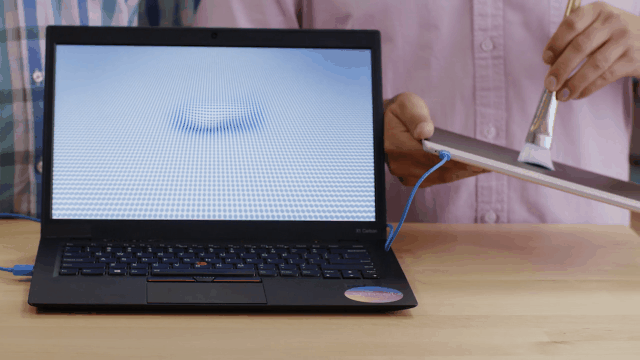It feels like a wave of pressure-sensitive tactile interfaces has been about to crest for years. But a pair of engineers believe they have built the hardware and software that could delivers on that promise — and they have funded the first round of production in just a couple of hours.
It’s called Sensel Morph, and the two inventors behind it think it could replace the way we interact with our devices today. “We’re trying to replace the archaic keyboard and mouse with an interface that captures the nuance and expression our hands are capable of,” says Ilya Rosenberg in the pitch video. Rosenberg and his partner, Aaron Zarraga, met while working as engineers at Amazon. Rosenberg left the company to finish up a PhD, and later reconnected with Zarraga while showing off a prototype of the force-sensitive interface.
“I saw an early prototype of one of the touch sensors back in October of 2013 and knew right away that I wanted to join up with him to start a new company,” Zarraga said over email today. “That’s how Sensel was born.”
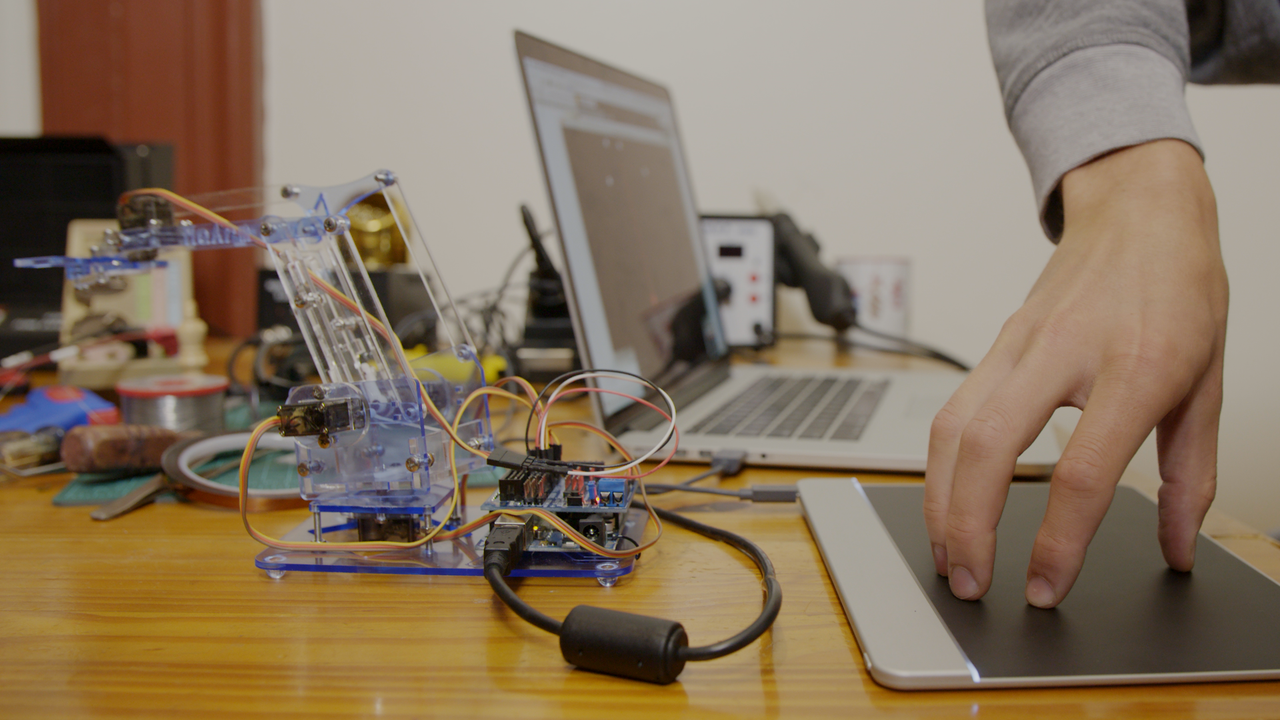
The Morph isn’t exactly a trackpad or Wacom, though it can certainly function as either if that’s what you want. Think of it more as the foundation of an interface, rather than the elements itself. The $US200 pad USB or Bluetooth-connected peripheral contains 20,000 individual sensors that give it an incredibly high-res picture of what kind of force is coming down on it. The duo are designing overlays that turn the board into application-specific interfaces, as complicated as a controller for a robotic arm or as simple as a QWERTY keyboard. They envision people being able to customise and build their own overlays, pushing the little panel further into the future without having the upgrade the hardware itself.
To demo, they asked engineers and musicians to try it out — including one who programmed it to precisely gesture control a servo motor-powered robot arm with the API.
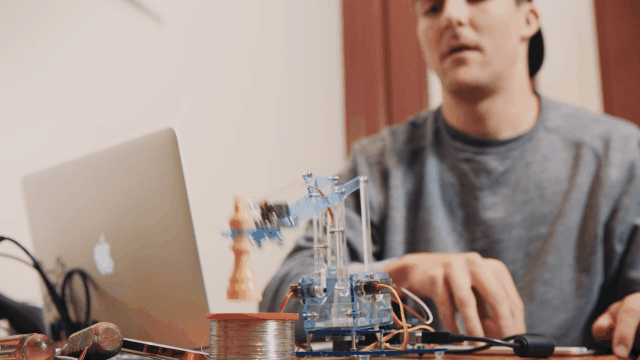
And another who designed and printed a simple plastic overlay to correspond to a controller for DJs.
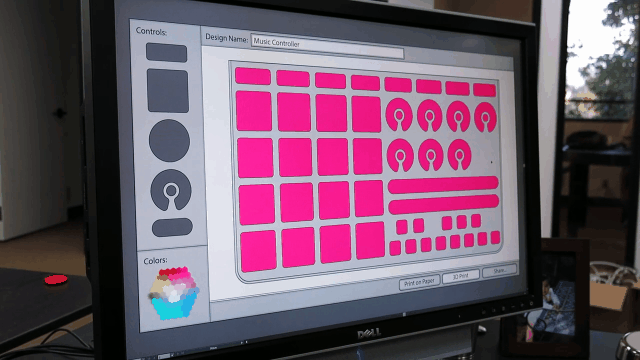
So, what’s inside? And how is this really any different from other force-sensitive hardware, like Force Touch, which four touch sensors at the corner and an actuator to provide feedback?
As Zarraga told me over email, he and Rosenberg invented a new type of sensor that’s simpler and more precise than the types used on force-sensitive pads right now. Where most force sensors are screen-printed onto mylar or another material, they engineered a sensor that can be manufactured a lot like a printed circuit board. That’s helpful because the process through which our circuit boards are made is a lot more precise and standardised — and using it to make the sensors results in far more uniform and sensitive sensors that are actually part of the circuit board inside the pad.
The hardware that reads those pressure touches is newly-engineered, too. “We’ve invented an entirely new drive scheme that allows us to scan this high-resolution touch sensor with low-cost electronics,” Zarraga said. “This makes it the first sensor of its type that is suitable for use in consumer electronics.”
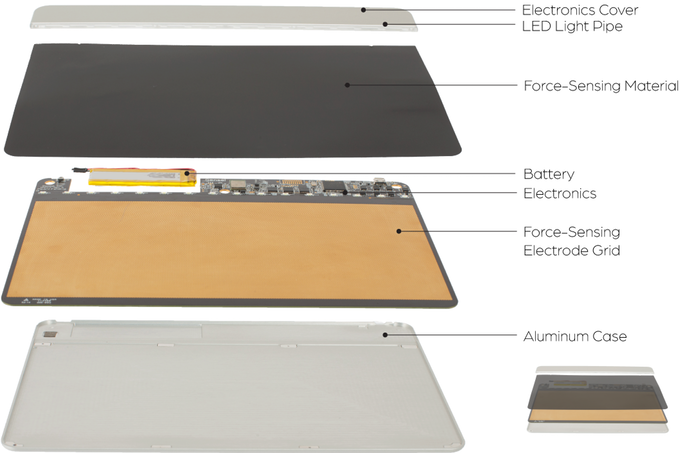
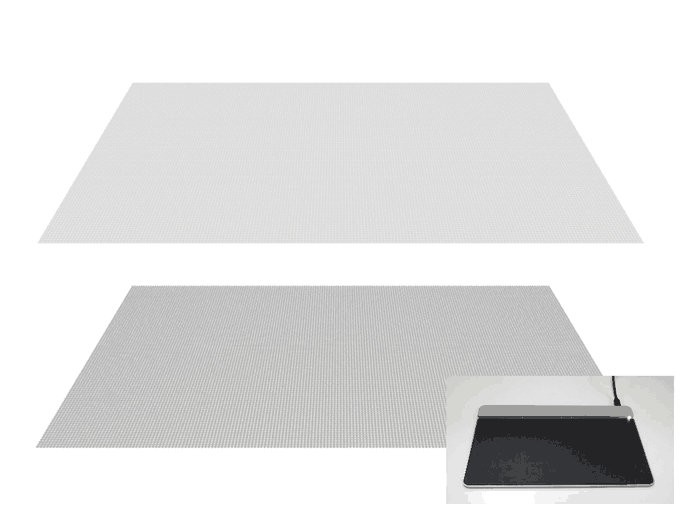
The duo didn’t do this alone, though the crowdfunding myth would seem to suggest it. After they built several prototypes using the new hardware, they contacted an industrial design firm to “shrink it down,” Zarraga says. Then it was on to Frog Design, the venerable design studio that has had a hand in everything from Apple’s original PCs to Microsoft Office’s new identity. Frog did more than offer design aide, though. The firm has a dedicated investment arm that not only provided the design help, but also a business model — right down to the details of the Kickstarter campaign that launched today.
Beyond being an exciting piece of interaction design, Sensel is also a good example of how Kickstarting hardware doesn’t always end in disaster — that crowdfunding does have a place in technology. In this case, the team didn’t simply come up with a good idea for new hardware and promise it would work — they developed it, invested in mechanical engineering expertise, miniaturised it, and then hooked up with a firm that could vet their business model and help sharpen a pitch before going live.
Sadly, not all consumer tech on Kickstarter has that kind of backing or aide — and as always, fund wisely. The pair say the first pads will ship next year.
